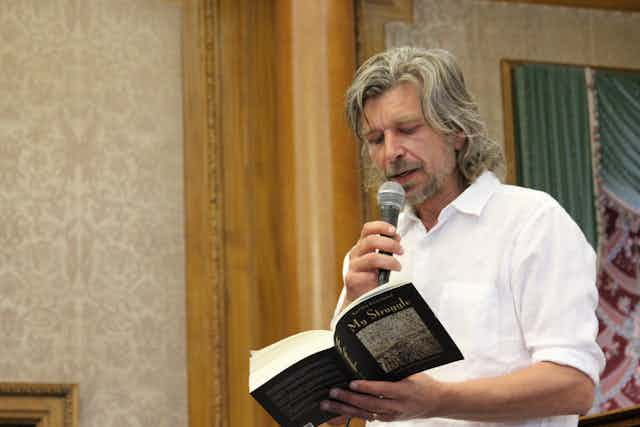What happens when novelists actively incorporate the idea of failure in their books?
We generally understand failure as a negative attribute, particularly when looking at politics, the economy – and, yes, art. As individuals, we are driven by thoughts of success and achievement, so it makes sense that failure might make us feel slightly uneasy.
Turning that unease into something aesthetically pleasing is no mean feat, and yet, that’s where we are with the work of several well-known contemporary authors.
Failing to speak
In 2007, British novelist Tom McCarthy, with philosopher Simon Critchley, issued what they called a Joint Statement of Inauthenticity, in which they argued that:
the essence of poetry is […] of trying (and failing) to speak about the thing itself and not just ideas about the thing.
While this might not seem to relate to the novel, what they were setting up there was a relationship between “trying to speak” and “failing to speak”.
One of the pervading motifs in McCarthy’s novels is an emphasis on some form of failure. In his first novel, Remainder (2005), the narrator tries, and fails, to reenact a moment of perfection.
In Men in Space (2007), McCarthy’s character Ivan Manasek forges a stolen Byzantine painting in an attempt to perfectly recreate the original object. In McCarthy’s most recent novel, Satin Island (2015), the narrator, U, is tasked with writing The Great Report of our age.
Long-listed for this year’s Man Booker Prize, this novel is, at its core, about the failure to write. The Great Report’s essential function is one of identification, one that “name[s] what’s taking place right now”.
U’s boss, Peyman, asks him to “[s]peak its secret name”. For U, this is rather like trying to name “Rumpelstilskin”, but it seems that McCarthy is directly engaging with the enduring aim of poetry to “speak to the thing”, even if he fails.
Trying and struggling
We don’t always feel pleased with artistic expressions of failure. In an article in June for the London Review of Books, American poet and novelist Ben Lerner suggested that the reason that we might “dislike or despise or hate poems” is because, in some way, “they are – every single one of them – failures”.
In Lerner’s first novel, Leaving the Atocha Station (2011), the narrator, Adam, is obsessed with artistic and linguistic failures because they allow him to experience an almost transcendent ambiguity. While in 10:04 (2014), the narrator, Ben, often addresses the second person – “You have failed to reconcile the realism of my body with the ethereality of the trees” – despite never being heard.
For Lerner, the “you” occupies “a collective person who didn’t yet exist, a still-uninhabited second person plural to whom all the arts, even in their most intimate registers, were nevertheless addressed” – or, in other words, an audience that he will always fail to reach.
But it is Karl Ove Knausgaard’s six-part literary project, My Struggle, that is perhaps the most overt example of such an attention to failure. It offers a prosaic, not poetic, assessment of failure.
Indeed, it is a project that strives deliberately towards constructing “real” experience. In framing the work as a novel, Knausgaard has claimed that he was able to “use [him]self as a kind of raw material,” enacting “an existential search” of the self.
The “struggle” suggested in the title references, in part, the struggle to write without shame to create something of value.
An Eastern perspective
Hungarian author László Krasznahorkai won the 2015 Man Booker International Prize. His most recent novel, Seiobo There Below (2013), introduces the reader to failure in slightly different terms, through the aesthetic of wabi-sabi.
Rooted in ancient Japanese tea ceremonies from the 15th century, wabi-sabi recognises beauty in imperfection, impermanence, and incompletion. To a Western eye, beauty is often equated with perfection, but for Krasznahorkai, fleeting moments are established as beautiful even if they go on to decay.
The novel’s first vignette describes the magnificent beauty of a white heron hunting, in contrast to industrial Kyoto.
But it is wabi-sabi’s focus on “the now” that makes it interesting when thinking about contemporary writing. What might be expected from a novel that reflects on its own inability to say things successfully? Or, more pressingly, that constructs failure as an aesthetically-pleasing subject?
By focusing on failure, contemporary novelists might find they can wield surprisingly equal critical, ethical, political, and aesthetic power.
Perhaps failure is not so bad after all.

